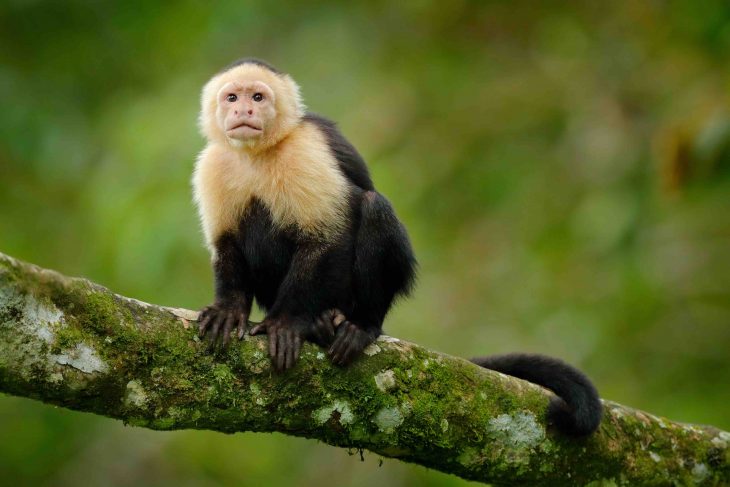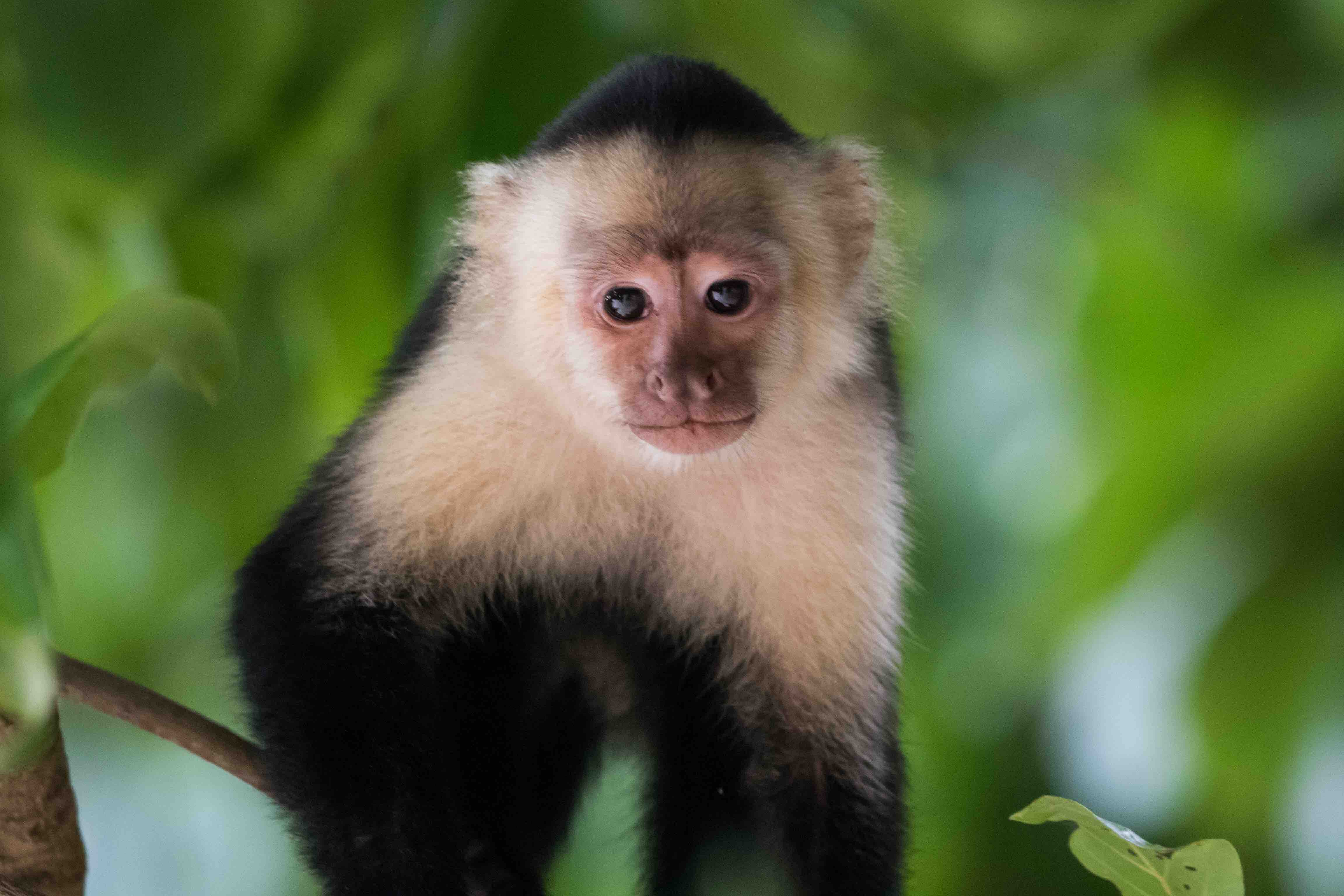
Capuchin monkeys are captivating creatures known for their intelligence and unique behaviors. With their expressive faces and dexterous hands, they have become a subject of fascination for both researchers and animal lovers. In this article, we’ll delve into 19 intriguing Capuchin monkey facts, shedding light on their cleverness, social structure, habitat, and more. Get ready to embark on an exciting journey and uncover the wonders of these remarkable primates.
Intelligent Problem-Solvers
Capuchin monkeys are renowned for their exceptional intelligence. They have demonstrated impressive problem-solving abilities, such as using tools to extract food or solving complex puzzles to obtain rewards. Their cognitive skills rival those of some primates.
Dexterous Hands
One of the distinguishing features of Capuchin monkeys is their remarkably dexterous hands. With their long, agile fingers and opposable thumbs, they exhibit incredible manual skills, allowing them to manipulate objects with precision.
Varied Diet
Capuchin monkeys are omnivorous, meaning they have a diverse diet that includes fruits, nuts, seeds, insects, small vertebrates, and even bird eggs. This adaptability allows them to thrive in various habitats and take advantage of available food sources.
Tail as an Extra Limb
The long and prehensile tail of Capuchin monkeys serves as an additional limb, providing balance and support as they navigate through the trees. They can use their tails to grasp branches and hang upside down, showcasing their exceptional agility.
Social Structure

Capuchin monkeys live in complex social groups known as troops. These troops typically consist of 10 to 30 individuals, led by a dominant male. They engage in intricate social interactions, including grooming, vocalizations, and displays of aggression or submission.
Tool Users
Capuchin monkeys are among the few non-human animals that use tools. They have been observed using sticks to extract insects from crevices, using stones as hammers to crack open nuts, and even fashioning tools from branches for specific purposes.
Curious and Inquisitive
Capuchin monkeys exhibit a natural curiosity and inquisitiveness. They explore their surroundings, investigate objects, and engage in play behavior. This curiosity contributes to their learning abilities and adaptability in various environments.
Excellent Communicators
Capuchin monkeys possess a wide repertoire of vocalizations, including various calls, screams, and barks. They use these vocalizations to communicate with other troop members, signaling danger, food availability, or establishing social bonds.
Range of Habitats
Capuchin monkeys inhabit a range of habitats, including rainforests, dry forests, and savannas, spanning from Central to South America. They demonstrate adaptability to different ecosystems, thriving in both high-canopy forests and more open environments.
Nimble Tree Dwellers
Capuchin monkeys are highly adapted to an arboreal lifestyle, spending the majority of their time in trees. They possess exceptional agility and are adept at leaping between branches, navigating complex forest canopies with ease.
Caring Parents
Capuchin monkeys display strong parental care within their troops. Mothers are primarily responsible for raising offspring, carrying them on their backs, grooming them, and providing protection. Other troop members may also assist in the care of young monkeys.
Cultural Behaviors
Capuchin monkeys exhibit cultural behaviors, with different troops displaying variations in tool use, foraging techniques, and vocalizations. These cultural differences are passed down through generations and contribute to the diversity of their behavior.
Playful Nature
Capuchin monkeys engage in play behavior, which serves various purposes, including social bonding, skill development, and stress relief. They playfully chase each other, wrestle, and engage in imaginative interactions, showcasing their playful and social nature.
Impressive Longevity

Capuchin monkeys have a relatively long lifespan compared to other similarly sized primates. In captivity, they can live up to 45 years, while in the wild, their average lifespan ranges from 15 to 25 years.
Conservation Concerns
Capuchin monkeys face several conservation challenges, primarily due to habitat loss, fragmentation, and illegal pet trade. Protecting their natural habitats and raising awareness about their ecological importance is crucial for their long-term survival.
Conclusion
In conclusion, Capuchin monkeys captivate us with their intelligence, dexterity, and social behaviors. They demonstrate remarkable problem-solving abilities, utilize tools, and exhibit a diverse range of communication. Their adaptability to various habitats and their role as key members of their ecosystems make them fascinating creatures deserving of our admiration and conservation efforts. Let us continue to learn from and protect these clever and captivating primates.
Frequently Asked Questions (FAQs)
Are Capuchin monkeys good pets?
Capuchin monkeys are not suitable as pets. They have complex social and behavioral needs that are difficult to meet in a home environment. Additionally, their ownership may be illegal in certain jurisdictions due to their protected status.
Can Capuchin monkeys recognize themselves in a mirror?
Capuchin monkeys have demonstrated self-recognition abilities, as indicated by their reactions to mirror tests. This suggests a level of self-awareness, which is a characteristic of highly intelligent animals.
Do Capuchin monkeys live in large groups?
Capuchin monkeys live in troops that can range in size from 10 to 30 individuals. These troops have a hierarchical structure, led by a dominant male, and engage in complex social interactions.
Are Capuchin monkeys endangered?
While specific species of Capuchin monkeys may face conservation challenges, such as the critically endangered black-capped Capuchin, overall, the Capuchin monkey group is not classified as endangered. However, their populations are threatened by habitat loss and other human-related factors.
Do Capuchin monkeys exhibit altruistic behavior?
Capuchin monkeys have been observed displaying altruistic behaviors, such as sharing food with other troop members or assisting injured individuals. These actions suggest a level of empathy and social bonding within their groups.
Was this page helpful?
Our commitment to delivering trustworthy and engaging content is at the heart of what we do. Each fact on our site is contributed by real users like you, bringing a wealth of diverse insights and information. To ensure the highest standards of accuracy and reliability, our dedicated editors meticulously review each submission. This process guarantees that the facts we share are not only fascinating but also credible. Trust in our commitment to quality and authenticity as you explore and learn with us.
